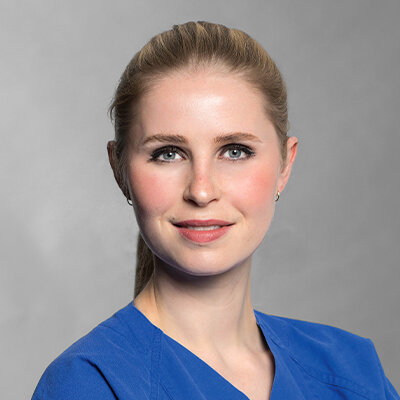Quintessence International, 6/2022
DOI: 10.3290/j.qi.b2793257, PubMed ID (PMID): 35274516Pages 534-545, Language: EnglishJennes, Marie-Elise / Hey, Jeremias / Bartzela, Theodosia N. / Mang de la Rosa, Maria R.The treatment management of patients with hemifacial microsomia (HM) includes both surgical and nonsurgical approaches and depends primarily on the degree of deformity of the facial and skeletal structures. In this context, the combined efforts of the maxillofacial surgeon, the orthodontist, and the prosthodontist are essential for a satisfactory functional and esthetic outcome.
Case presentation: A 31-year-old man presented with a chief complaint of facial asymmetry. The patient had been diagnosed with HM on the right side, with severe external ear deformity, and hypoplasia of the facial muscles and the zygomatic bone. The intraoral examination showed a Class I molar and canine relationship with a reduced horizontal overlap and an occlusal plane canting. The maxillary anterior teeth were severely worn due to traumatic occlusion. Orthodontic treatment in conjunction with combined orthognathic surgery was planned to address the facial asymmetry. Ramus distraction osteogenesis was carried out, followed by conventional presurgical orthodontic treatment. The treatment was completed by prosthetic rehabilitation for the reconstruction of the maxillary teeth and fine occlusal adjustment.
Conclusion: The cooperation between the orthodontist, surgeon, and prosthodontist becomes indispensable when treating complex cases of HM. An interdisciplinary approach should be adopted from the start of treatment, promoting integrated customized care.
Keywords: functional rehabilitation, hemifacial microsomia, interdisciplinary treatment, orthodontics, prosthodontics
International Journal of Computerized Dentistry, 1/2022
SciencePubMed ID (PMID): 35322648Pages 9-16, Language: English, GermanJennes, Marie-Elise / Soetebeer, Maren / Beuer, FlorianAim: The present narrative review aims to provide an overview of the in vivo accuracy of full-arch scans performed with currently used intraoral devices and to compare different methods for the determination of in vivo accuracy.
Materials and methods: An electronic search was performed with the PubMed, Cochrane Central Register of Controlled Trials (CENTRAL), and Web of Science databases, including articles from 2015 to 2020. Specific search strategies were developed for each platform.
Results: The final search resulted in five published articles. The mean values of trueness and precision of the examined scanners ranged from 12.9 to 80.01 µm for trueness and from 42.9 to 86.0 µm for precision in full-arch dentition. Not all studies evaluated both trueness and precision. Furthermore, the methods and references for determining the in vivo accuracy proved to be very different.
Conclusion: To date, no scientific consensus on the required accuracy of in vivo full-arch scans has been reached and published. Due to the small number of studies on the in vivo accuracy of full-arch scans, further studies should be conducted in this area. In addition, a concept for a valid reference that can be scanned both extraorally and intraorally should be developed.
Keywords: CAD/CAM, accuracy, in vivo accuracy, intraoral scanner, optical impressions, digital impression, digital dentistry
DZZ International, 3/2020
Open Access Online OnlyCase ReportDOI: 10.3238/dzz-int.2020.0073-0081Pages 73, Language: EnglishJennes, Marie-Elise / Mehrhof, Jürgen / Strietzel, Fank Peter / Schwendicke, Falk / Herbst, Sascha / Spies, BenediktDeutsche Zahnärztliche Zeitschrift, 3/2020
PraxisDOI: 10.3238/dzz.2020.0144-0153Pages 144, Language: GermanJennes, Marie-Elise / Mehrhof, Jürgen / Strietzel, Frank Peter / Schwendicke, Falk / Herbst, Sascha / Spies, Benedikt


